Losing a limb changes everything—from the way you move to the way you feel in your own body. But even before you receive your prosthesis, your journey toward recovery begins. That journey starts with preparing your body for movement again. And one of the most important, but often overlooked, parts of that preparation is core and balance training.
Many people think therapy after amputation only focuses on the limb that was lost. But your core—the muscles in your stomach, back, and hips—and your ability to stay balanced are just as important. These parts of your body work together to keep you steady, upright, and confident when you move. Without a strong core and good balance, even the best prosthetic limb will feel difficult to use.

Why Core and Balance Training Matters Before Prosthetic Fitment
Everything Begins at the Center of the Body
Your core is not just your stomach muscles. It includes your lower back, hips, and the deep muscles around your spine. These muscles hold you upright, help you move smoothly, and keep your body steady while you walk, sit, or reach for something.
After amputation, your body becomes unbalanced. You may favor one side or develop new ways of standing or sitting. Without a strong core, these habits can cause pain or poor posture.
They also make it harder to adapt to a prosthetic limb later. Even simple movements like getting out of a chair, turning around, or walking in a straight line become harder when your core muscles are weak.
Your body now has to work harder to do things it once did automatically. Every movement demands more control and more coordination.
Core training helps you rebuild that control. It prepares your muscles to support your prosthesis, adjust to changes in weight, and stay upright with less effort.
The Role of Balance in Everyday Movement
Balance is the body’s ability to stay stable during movement or while staying still. When you lose a limb, your sense of balance shifts. Suddenly, your weight is not distributed the same way. Your muscles need to learn how to hold and adjust your posture in a new way.
Good balance helps you walk without falling, stand for longer periods, and move more freely. Poor balance makes everything feel uncertain. You may move slower, hold onto furniture, or avoid walking altogether. This fear can grow and make recovery more difficult.
Before using a prosthesis, your brain and muscles need to relearn how to feel safe on your feet again. Balance training helps you trust your body. It gives you the confidence to move, even when everything feels unfamiliar.
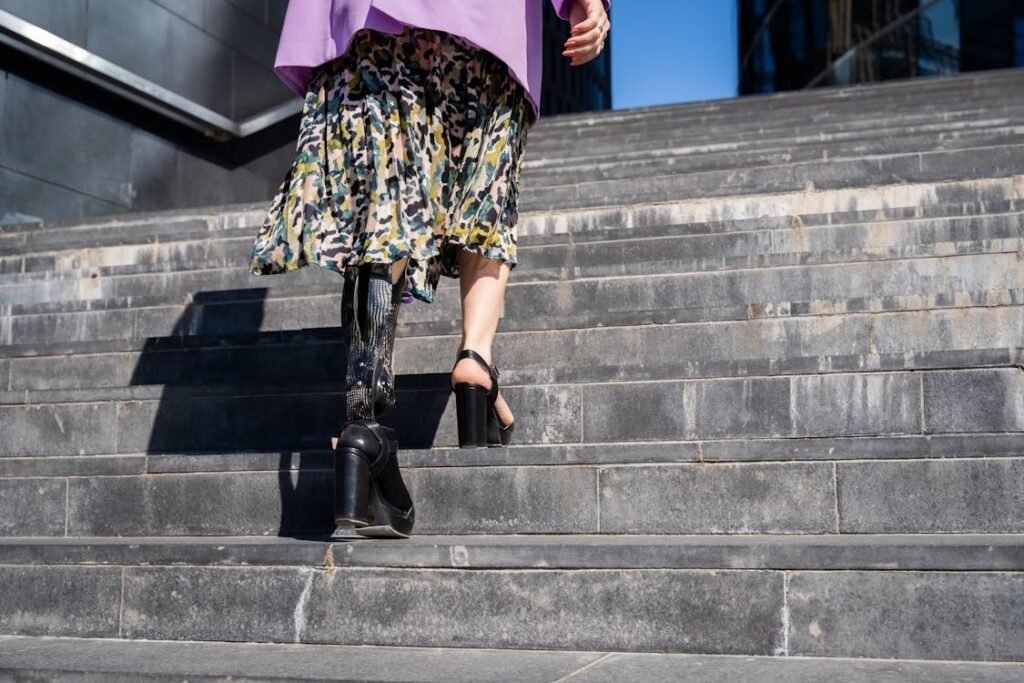
What Happens Without Core and Balance Training
More Risk of Falls and Injuries
One of the most serious risks after amputation is falling. Your center of gravity changes, and your muscles may not be ready to support this new way of moving.
Without strong core muscles and good balance, even simple actions like turning around or stepping over a small object can become dangerous.
A fall can lead to more injuries, more hospital visits, and longer delays before you can wear your prosthesis. This slows your progress and can damage your confidence.
That’s why it’s so important to train your core and balance before fitment. It keeps you safer and helps your body handle real-life situations better.
Even with a prosthesis, balance is not guaranteed. If your muscles haven’t learned to react quickly, you may wobble or feel unstable. Core and balance exercises teach your body how to stay in control and recover quickly if you lose your footing.
Difficulty Adapting to the Prosthetic Limb
When your core is weak, using a prosthetic limb can feel exhausting. The muscles around your stump may overwork to compensate, and this creates discomfort. Your body becomes stiff or tired faster. You may feel like the prosthesis is too heavy or awkward, even if it fits well.
Balance problems also show up during walking. You might lean too far to one side, drag your foot, or struggle with turning. These movement patterns make the prosthesis feel unnatural. Over time, they can even cause pain in your back, hips, or shoulders.
But when you build strength and stability before the prosthesis is fitted, your body can support the device better. Movements feel smoother. You waste less energy. The prosthesis begins to feel like a part of you, not something separate.
Core Strength: More Than Just Exercise
Improving Posture and Breathing
Good posture starts with a strong core. After limb loss, posture often becomes uneven. One side of the body may collapse inward, or the spine may curve in the wrong direction.
These postural issues can cause muscle tightness, pressure on the joints, and even breathing problems.
Core training helps realign your posture. It encourages you to sit and stand taller. This reduces strain on your back and neck and helps you move more efficiently.
You also breathe better when your posture improves. A strong, stable trunk gives your lungs more room to expand. You get more oxygen, which helps your muscles recover and stay active longer.
Many people don’t realize that posture affects their energy. When you slump or lean all day, your body works harder to stay upright. That creates fatigue. Good posture, supported by core strength, allows you to use your energy for movement, not just for staying balanced.
Supporting Other Muscle Groups
When your core is weak, other muscles try to pick up the slack. Your shoulders, arms, or remaining leg may carry more of the load. Over time, these muscles become overworked and sore. This can lead to joint pain, muscle imbalances, and poor walking patterns.
By strengthening your core, you give the rest of your body the support it needs. Your muscles start working together again. Movements become more balanced, and you’re less likely to experience strain or discomfort.
A strong core also helps with daily tasks like bathing, dressing, and transferring from one surface to another. These tasks require you to twist, reach, or lean—movements that become easier and safer with better trunk stability.
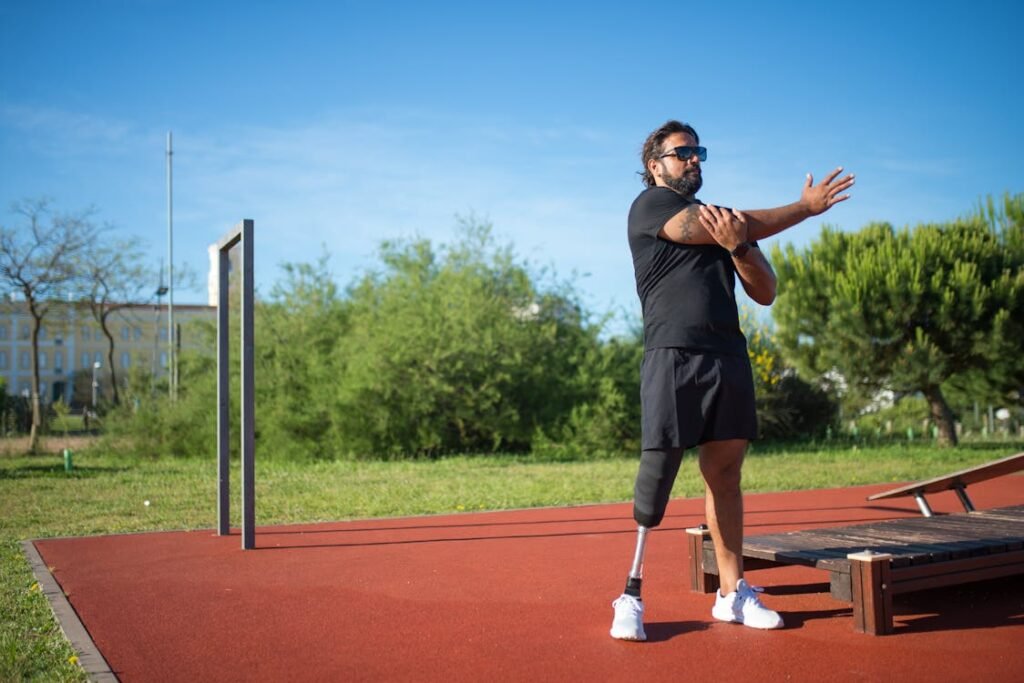
Balance Training: Building Confidence and Safety
Relearning How to Stand and Shift Weight
After amputation, the way your body handles weight changes. You may naturally shift more weight to your remaining limb or upper body without even noticing.
Over time, this creates imbalance. Your muscles on one side grow stronger while the other side stays weak. This can affect your posture, cause discomfort, and lead to unsafe movements.
Balance training teaches your body how to correct these habits. You begin by learning how to stand evenly—without leaning, slouching, or locking your joints.
From there, you practice gently shifting your weight from side to side. This may sound simple, but it’s a major step in preparing your body for walking again.
Each small movement trains your brain to trust your body. It starts to recognize that you can move without falling. The more you repeat these movements, the more automatic they become.
This is how balance is built—not through big, dramatic steps, but through slow, repeated motion.
Training the Mind as Well as the Body
Balance training is not just physical—it’s also mental. After an amputation, it’s normal to feel afraid of falling or unsure of your body. That fear often shows up during movement. You may hesitate, freeze, or avoid walking altogether. This slows recovery and increases dependence on others.
Practicing balance helps break that fear. As your body improves, your mind follows. You begin to trust your feet, your muscles, and your sense of space. That trust leads to more movement. More movement leads to more strength. And with more strength, you feel more independent.
This mental shift is one of the most important benefits of pre-prosthetic balance work. It gives you the courage to take that next step—literally and emotionally.
Starting Core and Balance Training Early
Gentle Movements Make a Big Difference
Some people wait too long to start core and balance training. They think they need to wait until they get their prosthesis or until their body feels stronger. But gentle movements can start early—often just a few days or weeks after surgery, depending on your doctor’s advice.
You might begin with simple things like sitting upright in bed, lifting your arms, or reaching forward while seated. Even small shifts in posture or slow leaning movements can begin the process of building strength and body control.
The key is to start where you are. If you’re tired, do a short session. If something feels too hard, go slower. The goal isn’t to push yourself into pain. It’s to teach your body to move again, one safe step at a time.
By starting early, you also avoid bad habits. When you wait too long, the body starts to form compensations—like always leaning to one side or twisting to stand.
These patterns are harder to correct later. Early training gives your body the best chance to heal in a balanced and functional way.
Working With Your Therapist
A physiotherapist plays a big role in your core and balance recovery. They’ll guide you through exercises, correct your form, and help you track progress. But therapy doesn’t stop in the clinic. You’ll also be given exercises to do at home.
Doing these exercises regularly makes all the difference. You don’t need a gym. Most movements use your own body weight and can be done from a bed, chair, or flat surface. As you get stronger, your therapist may add new movements to match your progress.
Your therapist will also notice any early signs of imbalance or muscle weakness and address them before they become bigger problems. This personal support ensures you’re training safely and getting the most benefit from every session.
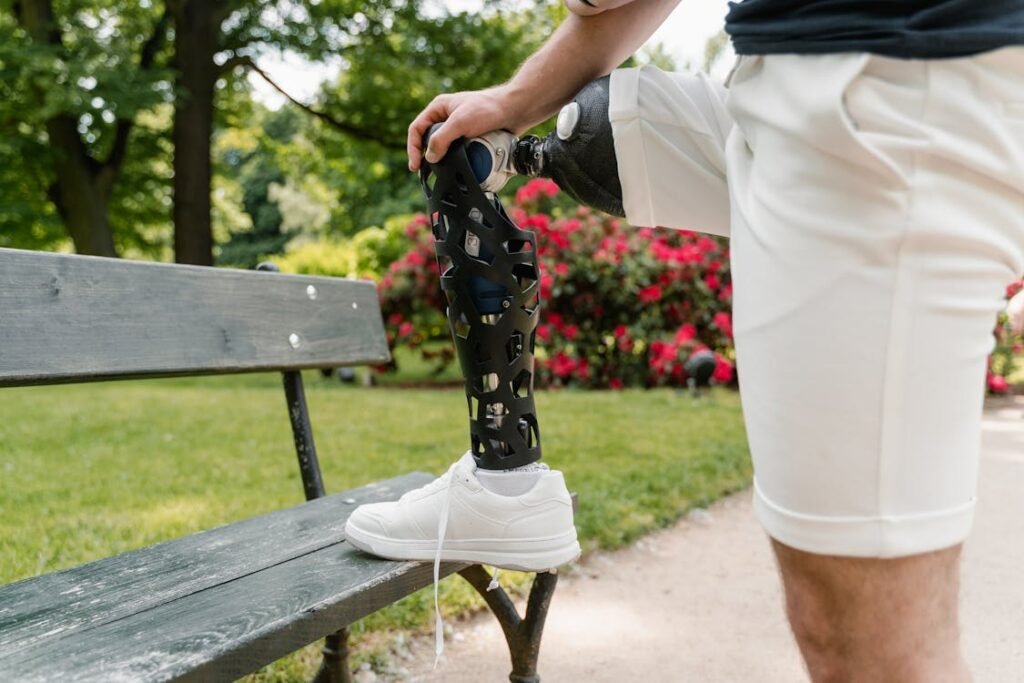
Core and Balance as the Foundation for Prosthetic Success
Why Strength and Stability Matter More Than Speed
When people think about recovery after amputation, they often focus on walking. They want to get up and move as quickly as possible. While that motivation is helpful, walking well depends on more than just getting a prosthesis. It depends on what your body can do before that moment comes.
If your core is weak or your balance is unsteady, your first steps will be harder. You might lean too much, drag your foot, or walk with a limp. These movement patterns don’t just feel awkward—they can cause long-term problems in your hips, spine, and knees.
That’s why building strength and control now is so important. It gives you a solid base. It helps your muscles respond naturally when you walk. And it lets you focus on learning the prosthetic, not on catching yourself with every step.
Recovery is not a race. It’s about building a body that’s ready for real movement—confident, calm, and in control.
Creating a Long-Term Habit
Core and balance training aren’t just for pre-prosthetic therapy. They’re something you’ll return to again and again, even after your prosthesis is fitted. These exercises help maintain posture, improve energy, and reduce the risk of injury as you become more active.
Think of them as lifelong tools. The more you practice now, the easier it will be to maintain good habits in the future. Whether you’re walking around the house or navigating uneven ground outside, your body will be more prepared. You’ll move more freely and feel safer doing it.
Over time, these daily practices become second nature. You won’t think twice about sitting upright, engaging your core, or shifting your weight evenly. It becomes part of how you live—not just something you “have to do.”
How Core and Balance Training Affects Energy Efficiency
Moving With Less Effort
After an amputation, everyday movements take more energy. Your body has to compensate for the missing limb, and it often does this by overusing certain muscles or adopting awkward movement patterns.
These habits can drain your energy quickly. Even walking across a room might leave you feeling exhausted.
When your core is strong and your balance is stable, your body moves more efficiently. Instead of overcorrecting with every step, your muscles work in harmony. You stay centered, upright, and aligned.
This cuts down the extra effort your body uses just to stay balanced. The result? You tire less easily.
This matters a lot once you begin using a prosthesis. A device that feels heavy or unnatural becomes much easier to manage when your body isn’t already working at full capacity just to stay upright.
The less energy you burn on basic tasks, the more energy you have for doing the things you love—whether it’s walking outdoors, working, or spending time with family.
Breathing and Movement in Sync
Energy isn’t just about muscles. It’s also about breathing. When your core is weak, your posture slumps. This compresses your lungs and makes it harder to breathe deeply. Over time, shallow breathing reduces stamina and makes it harder to recover after activity.
Strengthening your core opens up your posture. It allows you to breathe deeply, steadily, and more naturally. That increased oxygen fuels your muscles and improves your endurance. It helps you move better, for longer, and with greater ease.
You begin to notice that your energy stretches further, your mood improves, and your body recovers faster after movement.
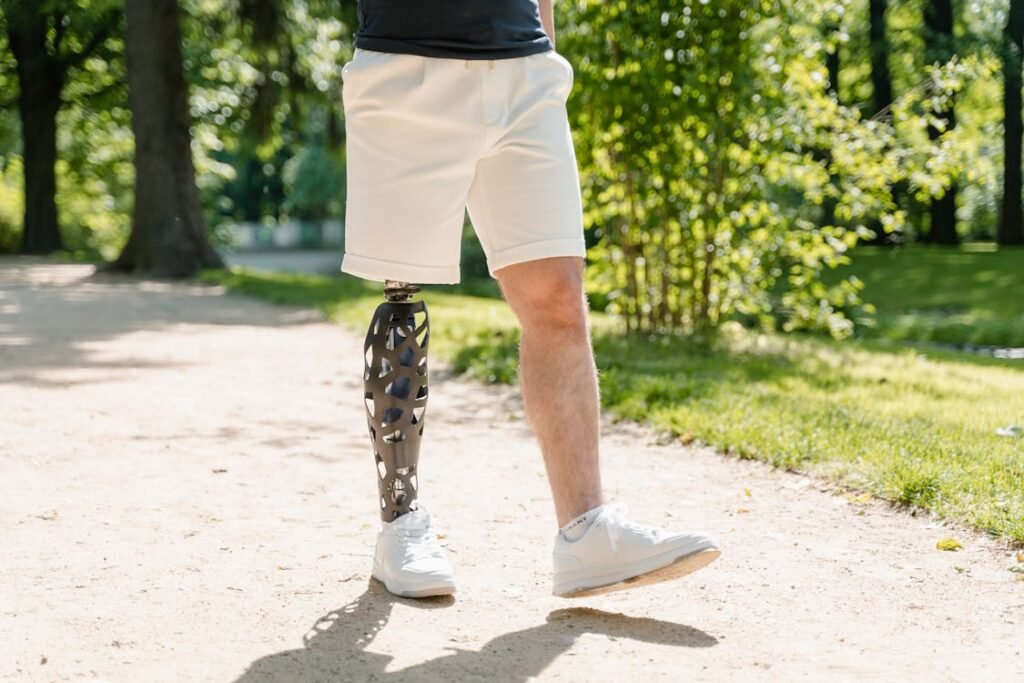
Understanding the Role of Sensory Awareness in Balance
Reconnecting with Your Body After Limb Loss
Balance is not just about muscles—it’s also about awareness. After losing a limb, many people lose a sense of where their body is in space. This sense is called proprioception. It’s how you know where your limbs are without looking at them.
Proprioception is disrupted after amputation, especially if the person avoids movement. Your brain no longer receives clear signals from the missing limb, and this can make movement feel strange or disjointed.
You may feel “off” when trying to turn, reach, or walk—even if your strength is improving.
Core and balance training help rebuild this awareness. When you move your torso, shift your weight, or work on posture, your brain starts to receive new, reliable signals from the rest of your body. These signals help you understand your position in space more clearly.
Over time, this helps you trust your body again. You no longer have to guess how you’re standing or walking. You begin to feel it—and that’s a major step in regaining independence.
Why Mirror Feedback and Visual Cues Help
Because your sense of body position may feel dull or inaccurate after surgery, using visual tools during balance training can be extremely helpful.
Watching yourself in a mirror while you shift your weight or adjust your posture gives you real-time feedback. You start to match what you see with what you feel.
This connection between vision and body awareness speeds up learning. It helps correct imbalances that may not be obvious to you at first. Your brain starts to rebuild a more accurate map of your body—even without the missing limb.
Therapists often encourage mirror work during rehab for this very reason. It combines strength training with sensory re-education. You not only move better, but you feel more connected to your body as you do it.
How Emotions Impact Core Engagement and Balance
Stress and Body Tension
Many people overlook how stress affects the body during recovery. After an amputation, it’s natural to feel anxious, frustrated, or overwhelmed. These emotions don’t just stay in the mind—they settle in the body, especially in the core.
Stress often leads to shallow breathing, tight abdominal muscles, and rigid posture. This makes it harder to engage your core during movement. It also disrupts your balance because your body becomes stiff and reactive instead of relaxed and responsive.
Recognizing this connection is important. Learning to manage stress—through deep breathing, mindful movement, or talking to a counselor—can actually improve how well your core functions.
A calm, focused mind supports better posture, smoother balance, and more effective therapy.
Building Emotional Stability Through Physical Control
On the flip side, gaining better control of your body can reduce emotional stress. When you start standing taller, walking more evenly, or holding your balance for longer, it builds self-trust. That physical stability translates into emotional strength.
You start to feel less afraid of movement. Less afraid of falling. More in control of your body—and your life. That kind of confidence is deeply healing, especially in a recovery journey that can often feel uncertain.
This is why core and balance work isn’t just about physical rehab. It’s part of emotional healing. It gives you something solid to hold onto—literally and mentally.
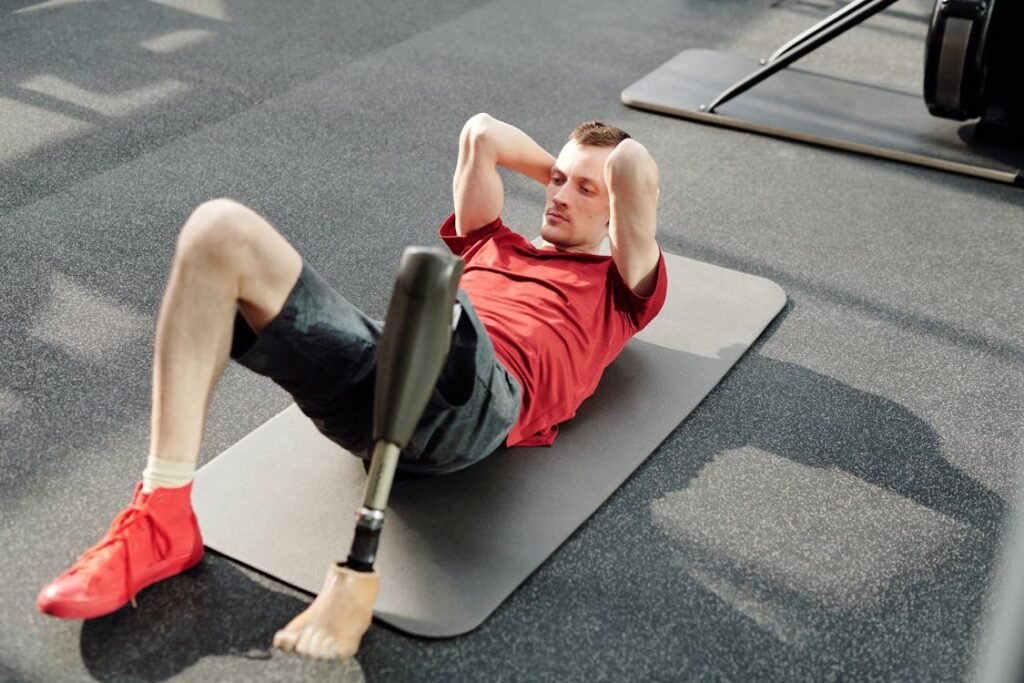
Bringing It All Together: Your Core Is the Key
Why This Work Matters Most Before the Prosthesis
When people hear “core and balance training,” they often think of fitness routines or gym workouts. But in pre-prosthetic therapy, it’s something much deeper. It’s not about getting fit—it’s about getting ready.
Ready to stand again. Ready to walk. Ready to move through life with strength, control, and confidence.
Your core and your balance work as the invisible foundation for every step you take. You don’t see them like you do a prosthetic device, but they hold everything together. Without them, recovery feels harder, slower, and more frustrating. With them, every next step feels more possible.
And the best part? You don’t need complex tools or big equipment. You only need your body, some time each day, and a bit of guidance.
What starts as small, simple movements quickly adds up to big progress—progress that will stay with you long after you begin using your prosthesis.
Trusting the Process
Recovery after limb loss is not a straight path. Some days you’ll feel strong. Other days you might feel unsure or stuck. That’s okay. Core and balance training teaches you not just how to move, but how to stay steady in the middle of change.
You learn how to fall less, how to move more freely, and how to rely on your body again. You start to trust yourself—not just because someone told you to, but because your body shows you that you can.
That trust leads to independence. It leads to confidence. And ultimately, it leads to a better life with your prosthetic limb.
Conclusion
Before the socket, before the steps, before the new routines—there is this. A strong core. A steady body. A sense of balance that makes everything else easier. That’s what this phase of therapy is all about. Not rushing. Not skipping steps. But building the foundation that allows every other part of recovery to succeed.
So whether you’re just beginning therapy or supporting someone who is, remember this: strengthening your core and training your balance is not a small part of the journey—it is the heart of it. Start slow. Stay consistent. Be kind to your body. And trust that each small, steady step is bringing you closer to walking tall, moving freely, and living life on your terms again.



